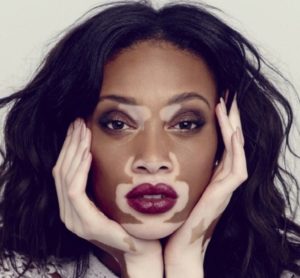How to use Tretinoin cream for wrinkles?
Tretinoin is most often used as a once-daily application, usually at night.
Wash your face with a gentle cleanser and allow the skin to fully dry, as remnants of water on the skin may increase the irritation side effects.
A small pea-sized amount is plenty and overuse of the cream may cause additional irritation.
Spread the cream over the entire face, avoiding the lips and too close to the eyes since these areas may become irritated.
Wash hands after application and leave the cream on overnight.
Where to buy Tretinoin cream?
Tretinoin is a prescription-only medication, and cannot be found over the counter.
You can schedule a visit with your local doctor to discuss Tretinoin therapy.
Or, you can have an Online Consultation with our U.S. licensed doctors to see if retinoin cream is the right course for you.
If you are a good candidate for our Anti-Aging Formulation containing Tretinoin, we can ship your prescription quickly and discreetly to your front door.
Summary
Tretinoin works for wrinkles by increases cell turnover and increases collagen production.
Many studies back up the photoaging benefits of a topical Tretinoin cream.
Tretinoin 0.05% is one of the most common strengths for its anti-aging benefits, although you will sometimes see 0.025% or 0.1%.
Increasing strengths of Tretinoin tend to come with increasing side effects.
Tretinoin is normally applied once daily at night to clean, dry skin.
Tretinoin therapy must be paired with daily sunscreen use as it can make your skin more sensitive to the sun.
Vitiligo: Curable or Not?
vitiligo favoriteplusVitiligo is the loss of skin pigment that causes white spots or patches to appear on the skin. No one knows precisely why this happens, but it affects people of all races, many of which are kids and teens.
Because vitiligo affects a person’s appearance, it can be distressing. However, it is not a form of skin cancer, and it is not contagious.
Vitiligo: Explained
Cells called melanocytes determine skin color. They form a pigment called melanin, which gives skin its color and helps protect it from the sun. Dark-skinned people have cells that produce a lot of melanin, while light-skinned people produce much less.
Sometimes, the skin stops making melanin. Initially, this may cause a small spot called a macule that is lighter in color than the skin around it. In time, these white patches may spread and grow to cover more areas of the body.
Occasionally, these white patches spread at a fast rate, then remain stable for years. Other times, the spread is slower, occurring over a more extended period.
Even though vitiligo affects all races, the spots are more evident on people with darker skin.
Vitiligo: Possible Causes
Skin specialists do not know the exact cause of vitiligo, but they do have theories. Some think it is the immune system attacking healthy melanocytes. Others believe it is genetic.
Vitiligo: How to Diagnose
A doctor can usually tell if someone has vitiligo simply by looking at the white patches. On people with fair skin, they use a tool called a Woods lamp. This lamp makes use of UV light in a dark room to highlight damaged areas that would be tough to see with the naked eye.
The doctor also may do a blood test to check for thyroid problems and diabetes, since they can increase the risk of vitiligo.
Vitiligo: Treatment
There is no permanent cure for vitiligo. At times, patches disappear on their own. Otherwise, doctors can prescribe treatments that might help even out skin tone. Some of these treatments are things you can try at home.
Sunscreen. Use a good sunscreen every day. Because vitiligo spots have no melanin, they can’t tan. If you don’t use sunscreen, your vitiligo patches may burn or scar.
Cosmetics. Different kinds of concealers are available to cover vitiligo. Your doctor can recommend products that can help cover up patches. Try various brands to find out which works for you.
Corticosteroid creams. When applied to white spots during its early onset, corticosteroids may help bring some color back to the skin. It decreases the inflammation that leads the epidermis to have fewer pigment cells.
Photochemotherapy (PUVA). In PUVA therapy, a medication called psoralen is either applied to the white patches of skin or taken orally. Spots are then exposed to ultraviolet light, like the sun, but more often, from an artificial source like a UVA lamp. It turns the affected skin pink, which in time tends to fade to a more natural color.
Narrow-band UVB therapy. This treatment is more popular than PUVA. They are similar, except that the ultraviolet light used here is UVB instead of UVA. UVB therapy does not make use of psoralen, eliminating some of the risks in PUVA treatment.

Dermatologists are looking into a new procedure called a melanocyte transplant. It works by removing a sample of pigmented skin and using it to grow melanocytes in the lab. Doctors can then transplant this back into the depigmented skin to return some of the missing colors.
Is Vitiligo Genetic or Hereditary?
Vitiligo is an autoimmune disease with a strong genetic component. It features areas of depigmented skin resulting from loss of epidermal melanocytes. Undoubtedly, genetic factors play key roles in this skin condition.

Is vitiligo hereditary?
Yes, vitiligo has a genetic basis. Nevertheless, less than half of those with the condition know of someone in their family who also has it. On the other hand, if you have it, it does not follow that your children will develop it.
What is the exact cause of vitiligo?
The exact cause of vitiligo is unknown. Some believe that it arises from genetic susceptibility activated by an environmental factor. It is like how an autoimmune disease occurs.
Vitiligo results in the destruction of skin pigment cells. Risk factors include a family history of the condition or other autoimmune diseases. Clearly, it is not contagious.
Vitiligo has two main types: segmental and non-segmental. As has been noted, most cases are non-segmental. In short, they affect both sides. Overall, in these cases, the affected area of the skin expands with time.
Likewise, about 10% of cases are segmental. In brief, they involve one side of the body. Ordinarily, in these cases, the affected area of the skin does not expand with time. Usually, tissue biopsy confirms diagnosis.
Genes and Vitiligo
By and large, genes are the instructions for life that make and run us. On the whole, one gene has the instructions to create one protein. And, each protein does a specific job in the body. For example, we have a gene that makes insulin that helps us use sugar. Similarly, there is one for hemoglobin that helps our bodies carry oxygen in the blood.
Experts compared the entire set of genes of groups of people with and without vitiligo. They found more than 10 genes associated with the condition. Some of these genes relate to the immune system, and some with melanocytes.
People who have it don’t have genes that other people don’t have. There is no vitiligo gene. These folks have different versions of these 10 genes that we all share.
Different versions mean different instructions, which means a different protein may get made. These different proteins may look or act different from those without vitiligo. And to some degree, these differences causes the destruction of melanocytes.
Lastly, it is important to mention that genetics is not the only one to blame for vitiligo. Environmental factors and chance each play a role as well. We know this because an identical twin of a person with the condition has a 23% risk of developing the disease even though most of their DNA is identical. If it’s all caused by genes, that risk would be 100 percent.
How is Benoquin Supplied
Benoquin Cream 20% in 1 1/4 oz. tubes (35.4 g) buy benoquin otc
(NDC 0187-0380-34).
Benoquin Cream 20% should be stored at 25°C (77°F);
excursion permitted to 15°C - 30°C (59°F - 86°F).
ICN Pharmaceuticals, Inc.
3300 Hyland Ave.
Costa Mesa, CA 92626
(714)545-0100
2393-05 EL
Rev. 8-00
| Benoquin monobenzone cream |
||||||||||||||
|
||||||||||||||
|
||||||||||||||
|
||||||||||||||
|
||||||||||||||